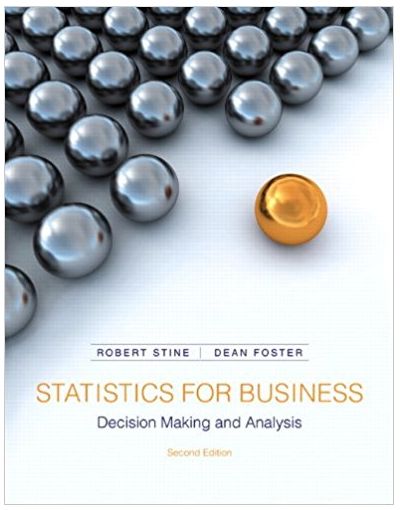Banks often rely on an originator that seeks out borrowers whom it then connects with the bank.
Question:
Unless a bank is careful, however, an originator may not be thorough in its review of applications; the loans may be riskier than the bank would prefer. To monitor the origination process, the bank in this analysis has obtained the credit scores of a sample of 215 individuals who applied for loans in the current week. A credit score is a numerical rating assigned to a borrower based on his or her financial history. The higher the score, the less likely it is that the borrower will default on the debt. The bank would like for the credit score of loans in this portfolio to average 650 or more.
This sample was drawn randomly from applications received from five originators identified for confidentiality as “a,” “b,” “c,” “d,” and “e.” (The bank cannot audit the credit history of every loan; if it did, it would reproduce the work of the originator and incur the associated costs.)
Motivation
(a) The bank expects loans from these originators to obtain an average credit score of at least 620. Why is it necessary for the bank to monitor a sample of the credit scores of the loans submitted by originators?
Method
(b) How can the bank use this sample to check the objective of an average credit score of at least 620?
(c) Even if all of the originators meet the objective of a 620 average credit score, some may be producing better loans than others. How can the bank decide?
Mechanics
(d) Summarize the results of the estimated ANOVA model. Include the F-test and estimates from the regression using four dummy variables.
(e) Do these data appear suited to modeling with an ANOVA?
(f) Assume that the data meet the conditions of the MRM. Do loans from any originator average less than 620 by a statistically significant amount? Be sure to adjust appropriately for multiplicity.
(g) Assume that the data meet the conditions of the MRM. Using confidence intervals that have been adjusted for multiplicity, are there any statistically significant differences among the credit scores of these samples?
Message
(h) Summarize the results of the ANOVA for the management of the bank. Should the bank avoid some of the originators? Are some better than others?
(i) The R2 for the underlying regression is “only” 9%. Isn’t that too low for the model to be useful? Explain why or why not. Face Value
Face value is a financial term used to describe the nominal or dollar value of a security, as stated by its issuer. For stocks, the face value is the original cost of the stock, as listed on the certificate. For bonds, it is the amount paid to the... Portfolio
A portfolio is a grouping of financial assets such as stocks, bonds, commodities, currencies and cash equivalents, as well as their fund counterparts, including mutual, exchange-traded and closed funds. A portfolio can also consist of non-publicly...
Fantastic news! We've Found the answer you've been seeking!
Step by Step Answer:
Related Book For 

Statistics For Business Decision Making And Analysis
ISBN: 9780321890269
2nd Edition
Authors: Robert Stine, Dean Foster
Question Posted:





